In 2025, the way we eat is evolving, with a growing focus on sustainability and health. Sustainable and healthy recipes are no longer just a trend—they’re a necessity for protecting our planet and improving our well-being. By choosing ingredients that are good for both our bodies and the environment, we can enjoy delicious meals while reducing our carbon footprint.
In this article, we’ll explore 7 amazing sustainable and healthy recipes that are perfect for 2025. From hearty plant-based dishes to refreshing desserts, these sustainable and healthy recipes are designed to be easy, nutritious, and eco-friendly. Plus, we’ll share tips on how to make sustainable eating a part of your daily life. Let’s dive in!
Why Sustainable Eating Matters in 2025
The food we eat has a significant impact on the environment. From greenhouse gas emissions to water usage and deforestation, our dietary choices play a crucial role in shaping the future of our planet. Sustainable and healthy recipes offer a solution by focusing on ingredients and practices that minimize harm to the environment while maximizing nutritional benefits.
Environmental Benefits of Sustainable Eating:
- Reduces Carbon Footprint: Plant-based foods generally produce fewer greenhouse gas emissions compared to animal products.
- Conserves Water: Growing vegetables and grains requires less water than raising livestock.
- Minimizes Food Waste: Sustainable eating encourages creative use of leftovers and seasonal ingredients.
Health Benefits of Sustainable Eating:
- Improves Nutrition: Whole, plant-based foods are rich in vitamins, minerals, and antioxidants.
- Supports Weight Management: High-fiber, low-calorie foods help maintain a healthy weight.
- Reduces Exposure to Harmful Chemicals: Organic and locally sourced ingredients are often free from pesticides and preservatives.
By embracing sustainable and healthy recipes, we can make a positive impact on both our health and the planet.
7 Amazing Sustainable and Healthy Recipes
Here are “7 Amazing Sustainable and Healthy Recipes for 2025: Eat Well and Protect the Planet” that align with the principles of sustainability and health. Each recipe is easy to prepare, packed with nutrients, and designed to minimize environmental impact.
Recipe 1: Quinoa and Roasted Vegetable Bowl
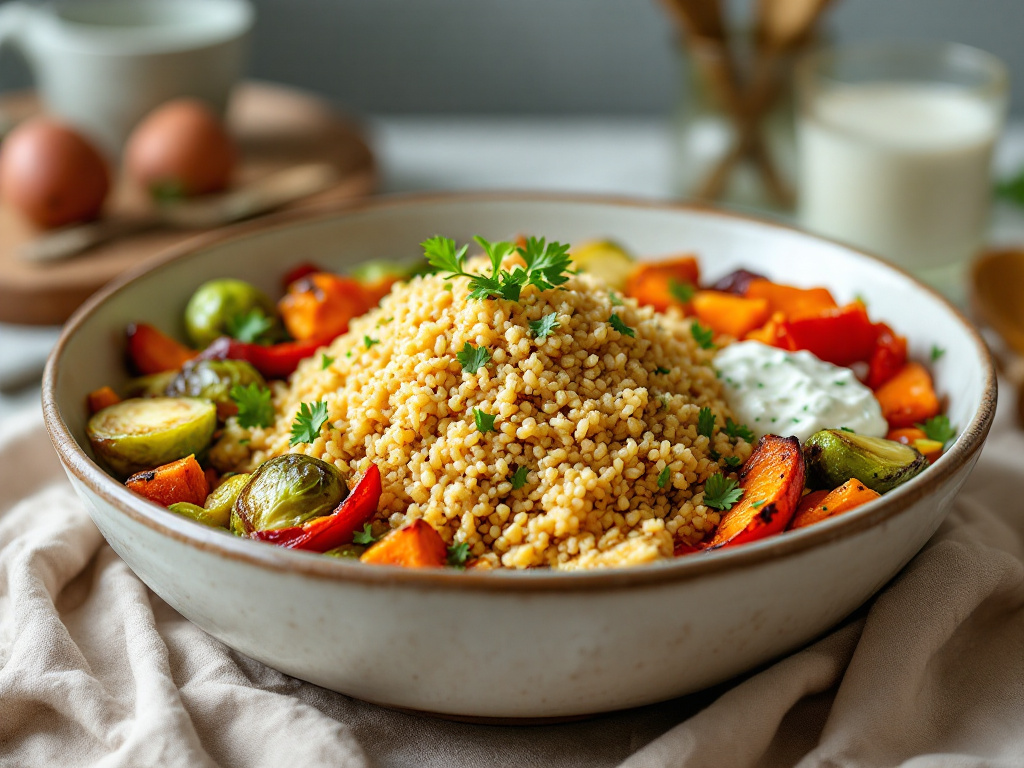
Presentation: A colorful, nutrient-packed bowl perfect for lunch or dinner.
Ingredients:
- 1 cup of cooked quinoa.
- 2 cups of mixed vegetables (e.g., bell peppers, zucchini, carrots).
- 2 tablespoons of olive oil.
- 1 teaspoon of paprika.
Preparation Technique:
- Toss vegetables with olive oil and paprika, then roast at 200°C (400°F) for 20 minutes.
- Serve over quinoa.
Duration: 30 minutes.
Difficulty: Easy.
Benefits: High in fiber, supports digestion, and reduces carbon footprint.
Recipe 2: Lentil and Sweet Potato Curry
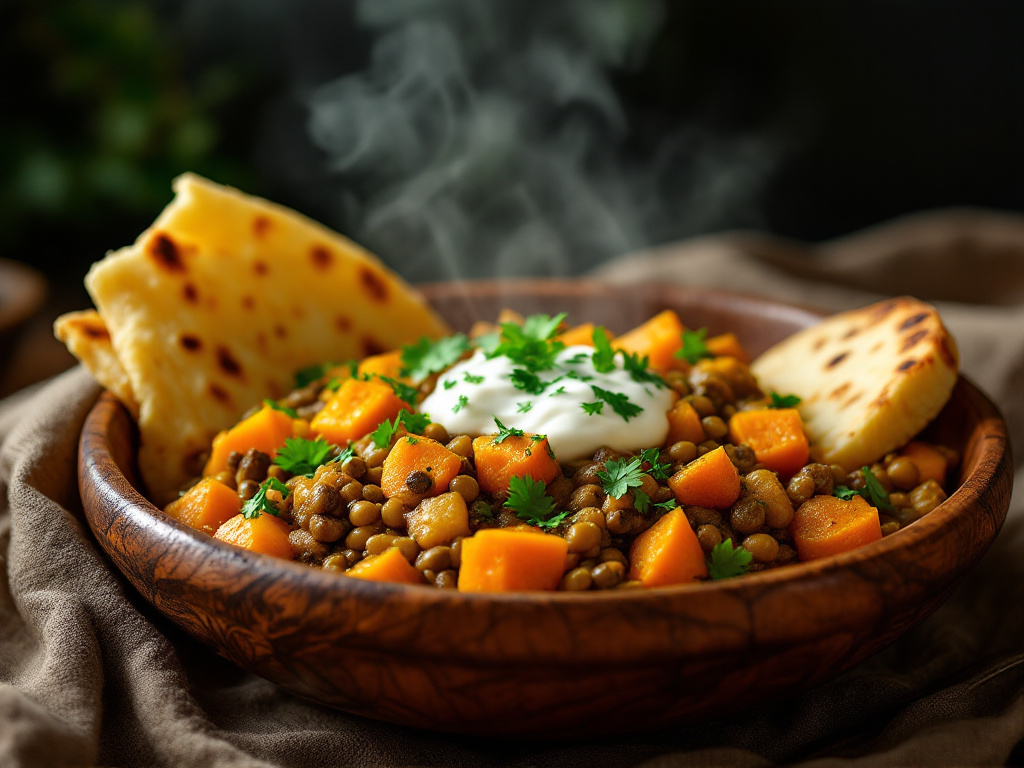
Presentation: A hearty, plant-based curry that’s both filling and nutritious.
Ingredients:
- 1 cup of lentils.
- 1 sweet potato (peeled and diced).
- 1 can of coconut milk.
- 1 tablespoon of curry powder.
Preparation Technique:
- Cook lentils and sweet potato in a pot with coconut milk and curry powder.
- Simmer for 25-30 minutes.
Duration: 35 minutes.
Difficulty: Easy.
Benefits: Rich in protein, supports heart health, and eco-friendly.
Recipe 3: Chickpea and Avocado Salad
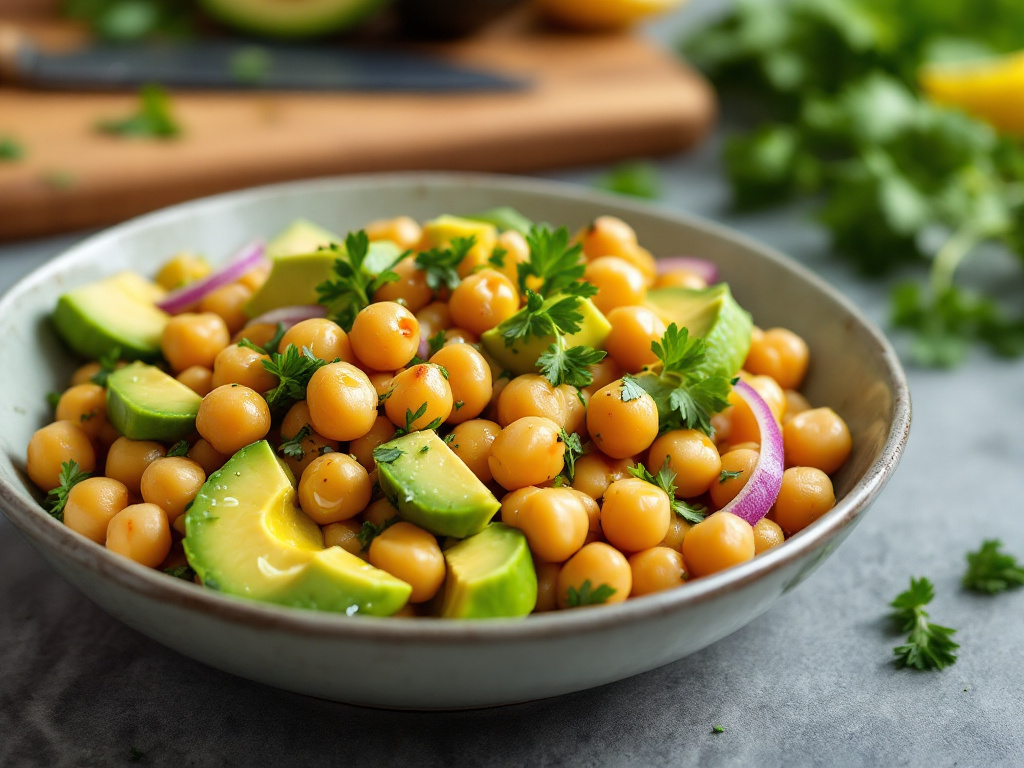
Presentation: A light and refreshing salad perfect for lunch.
Ingredients:
- 1 can of chickpeas (drained and rinsed).
- 1 avocado (diced).
- 1/4 cup of olive oil.
- 1 tablespoon of lemon juice.
Preparation Technique:
- Toss chickpeas and avocado with olive oil and lemon juice.
Duration: 10 minutes.
Difficulty: Easy.
Benefits: High in healthy fats, supports brain health, and sustainable.
Presentation: A light and refreshing salad perfect for lunch.
Ingredients:
- 1 can of chickpeas (drained and rinsed).
- 1 avocado (diced).
- 1/4 cup of olive oil.
- 1 tablespoon of lemon juice.
Recipe 4: Spinach and Mushroom Stir-Fry
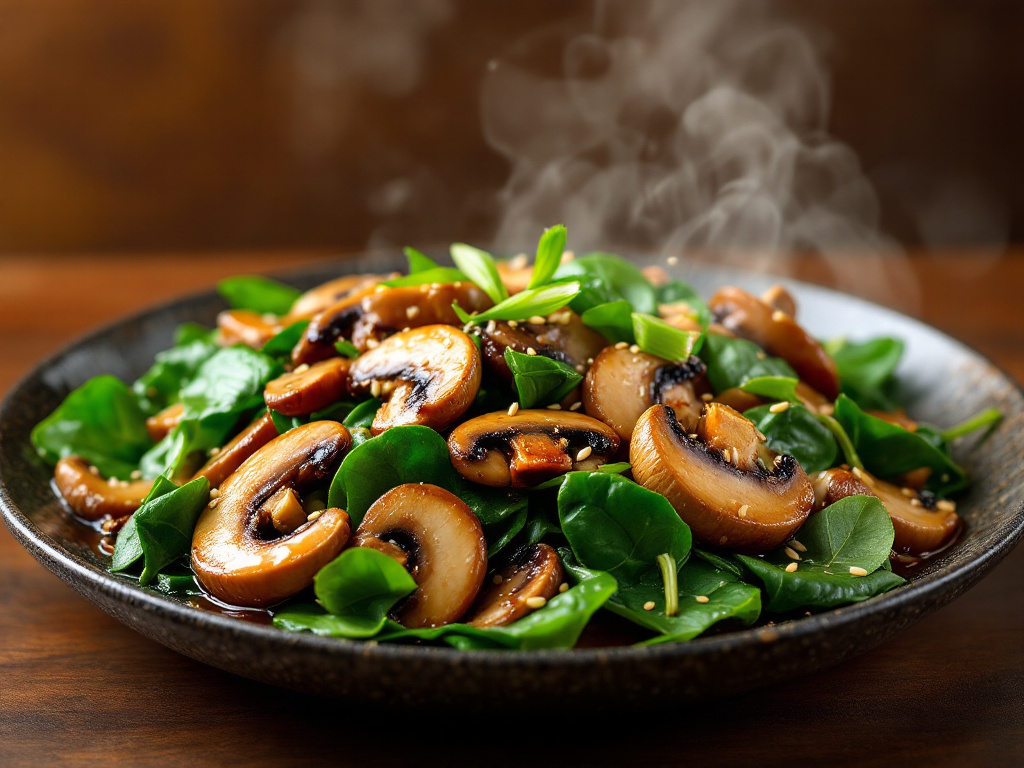
Presentation: A quick, nutrient-packed stir-fry for busy weeknights.
Ingredients:
- 2 cups of spinach.
- 1 cup of mushrooms (sliced).
- 2 tablespoons of soy sauce.
- 1 tablespoon of sesame oil.
Preparation Technique:
- Sauté mushrooms in sesame oil until tender.
- Add spinach and soy sauce, then cook until wilted.
Duration: 15 minutes.
Difficulty: Easy.
Benefits: Rich in iron, supports immunity, and eco-friendly.
Recipe 5: Berry and Chia Seed Pudding
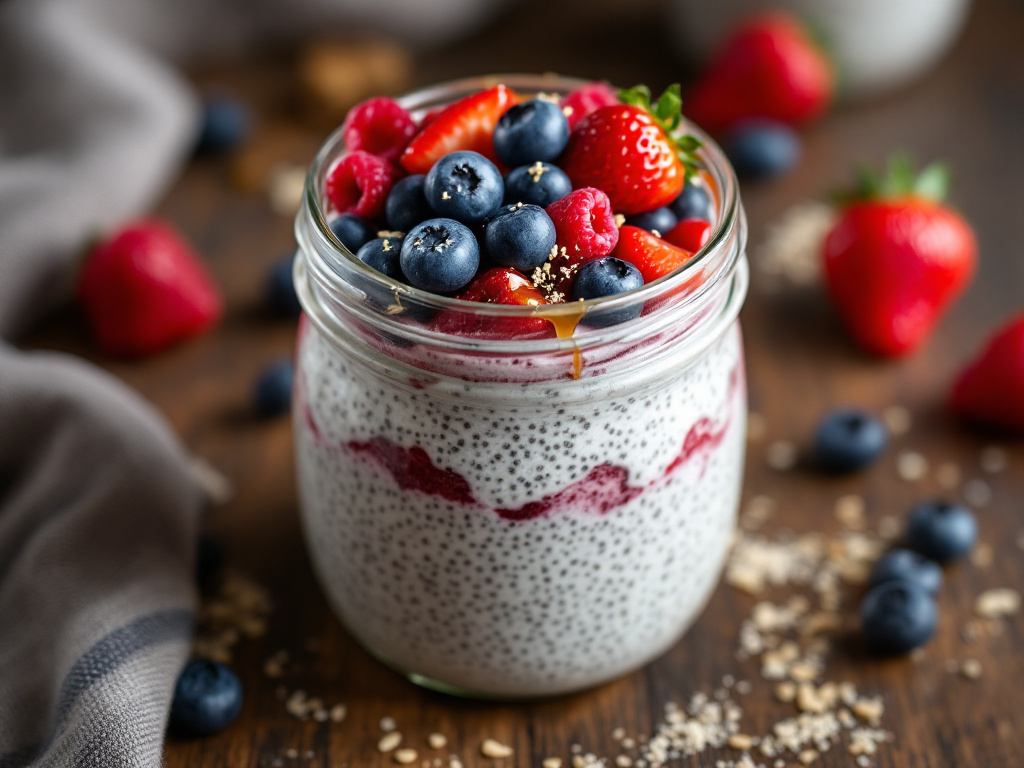
Presentation: A sweet, healthy dessert or breakfast option.
Ingredients:
- 1/2 cup of chia seeds.
- 2 cups of unsweetened almond milk.
- 1/2 cup of mixed berries.
Preparation Technique:
- Mix chia seeds and almond milk, then refrigerate overnight.
- Top with berries before serving.
Duration: 5 minutes (preparation) + overnight (setting).
Difficulty: Easy.
Benefits: High in omega-3s, supports brain health, and sustainable.
Recipe 6: Zucchini Noodles with Pesto
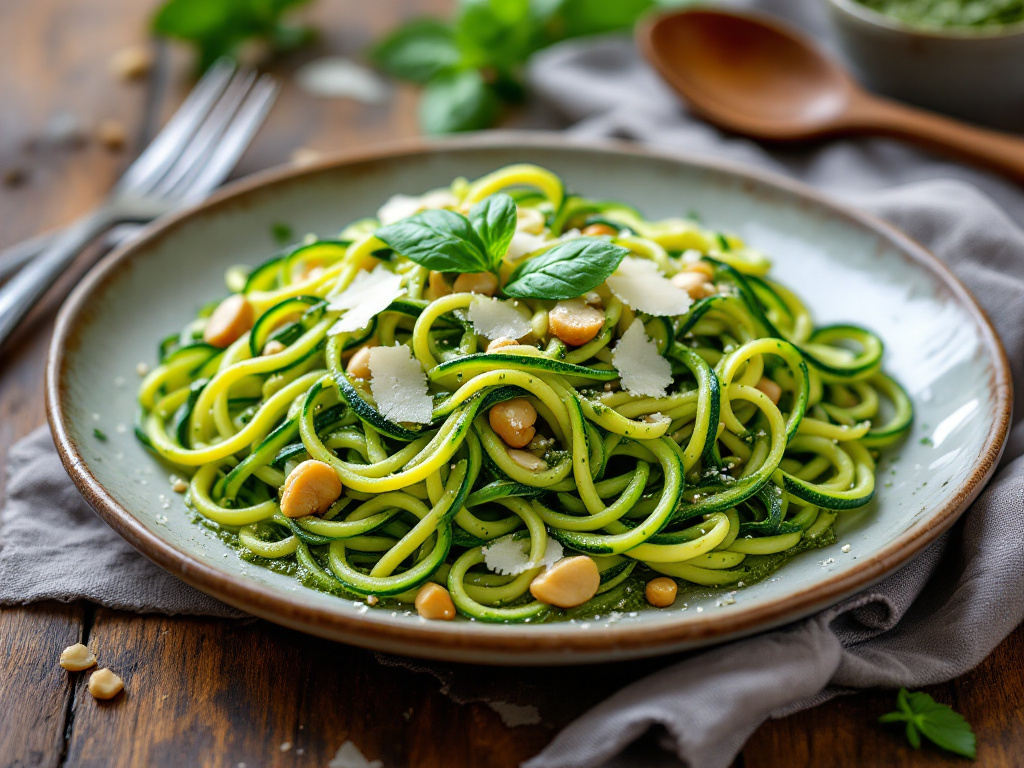
Presentation: A low-carb, nutrient-packed alternative to pasta.
Ingredients:
- 2 zucchinis (spiralized into noodles).
- 1/4 cup of basil leaves.
- 2 tablespoons of olive oil.
- 1 clove of garlic.
Preparation Technique:
- Blend basil, olive oil, and garlic to make pesto.
- Toss with zucchini noodles.
Duration: 15 minutes.
Difficulty: Easy.
Benefits: Low in calories, supports weight loss, and eco-friendly.
Recipe 7: Black Bean and Corn Tacos
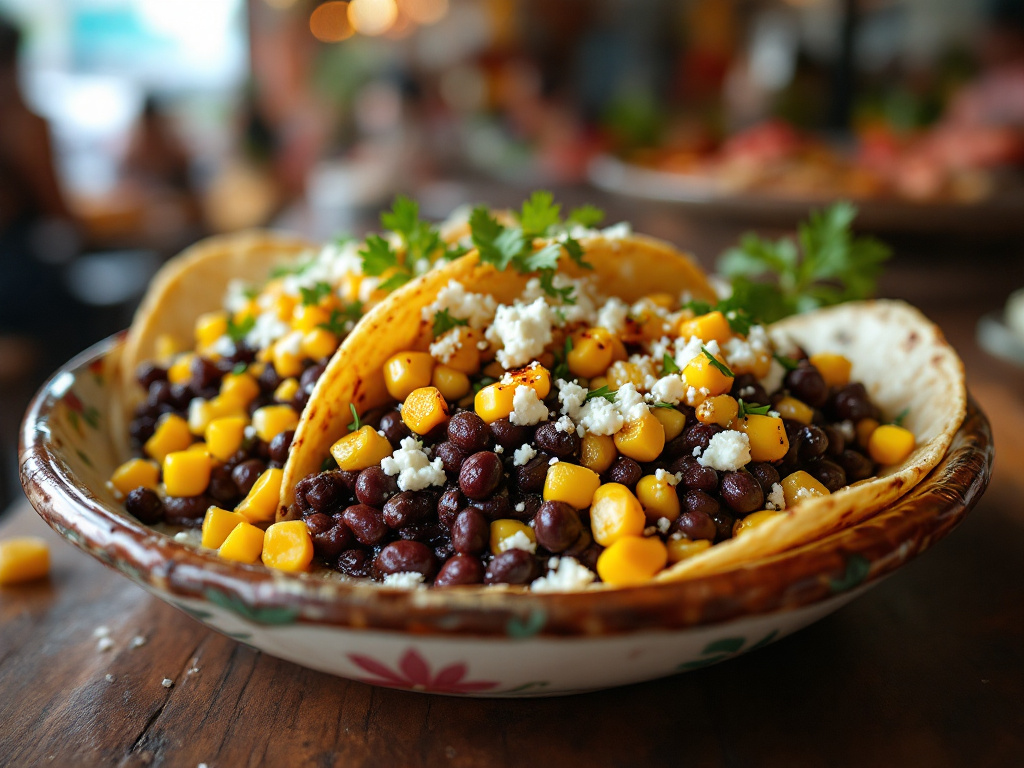
Presentation: A fun and healthy twist on traditional tacos.
Ingredients:
- 1 cup of black beans.
- 1/2 cup of corn kernels.
- 4 whole-grain tortillas.
- 1 teaspoon of chili powder.
Preparation Technique:
- Sauté black beans and corn with chili powder.
- Serve in tortillas.
Duration: 20 minutes.
Difficulty: Easy.
Benefits: High in fiber, supports digestion, and sustainable.
Tips for Sustainable Eating
- Choose Local and Seasonal Ingredients: This reduces transportation emissions and supports local farmers.
- Minimize Food Waste: Plan meals, store food properly, and use leftovers creatively.
- Opt for Plant-Based Proteins: Beans, lentils, and tofu are sustainable and nutritious alternatives to meat.
- Reduce Packaging Waste: Buy in bulk and avoid single-use plastics.
For more tips on sustainable eating, check out this link: Eco-Friendly Kitchen Tips.
Conclusion
Sustainable and healthy recipes are more than just a way to eat well—they’re a powerful tool for protecting the planet and improving our health. By incorporating these 7 amazing sustainable and healthy recipes into your routine, you can enjoy delicious, nutrient-packed meals while significantly reducing your environmental impact. Each recipe is designed to be easy to prepare, budget-friendly, and bursting with flavor, making sustainable eating accessible for everyone.
Whether you’re looking to boost your nutrition, support local farmers, or simply try something new, sustainable and healthy recipes offer a practical and enjoyable solution. 7 Amazing Sustainable and Healthy Recipes for 2025: Eat Well and Protect the Planet” not only nourish your body with essential vitamins, minerals, and antioxidants but also help conserve resources, reduce waste, and lower greenhouse gas emissions. It’s a win-win for both you and the planet.
The best part? You don’t have to make drastic changes overnight. Start small by swapping one meal a day with a sustainable option, like a quinoa and roasted vegetable bowl or a refreshing chickpea and avocado salad. Over time, these small steps can lead to big changes—for your health, your community, and the environment.
So why wait? Start exploring the world of sustainable and healthy recipes today. Try the sustainable and healthy recipes we’ve shared, experiment with your own variations, and share your creations with friends and family.Together, we can make a difference—one meal at a time.
FAQs
1. What is sustainable eating?
Sustainable eating focuses on choosing foods that are healthy for both people and the planet, such as plant-based, local, and seasonal ingredients.
2. Can sustainable eating help the environment?
Yes, it reduces greenhouse gas emissions, water usage, and deforestation associated with food production.
3. Are these recipes suitable for vegetarians?
Yes, all recipes are plant-based and vegetarian-friendly.
4. How can I reduce food waste at home?
Plan meals, store food properly, and use leftovers creatively.
5. Are sustainable recipes expensive?
Not necessarily. Staples like beans, grains, and seasonal produce are affordable and versatile.
6. Can I use frozen vegetables in these recipes?
Yes, frozen vegetables are a sustainable and convenient option.
7. How do I start eating sustainably?
Begin by incorporating more plant-based meals and choosing local, seasonal ingredients.
8. Are these recipes kid-friendly?
Absolutely! Dishes like black bean tacos and berry pudding are great for kids.

